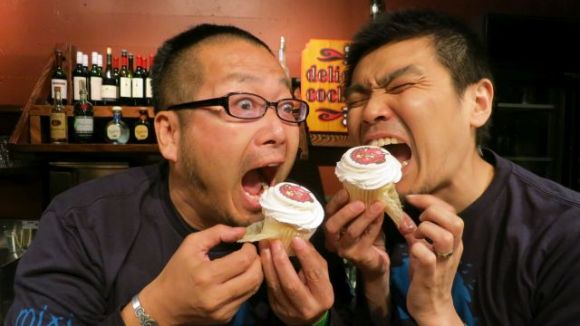
When Street Fighter II creator and retro gaming legend Yoshiki Okamoto announced two years ago that he was leaving console games forever to pursue mobile gaming projects, many probably thought he was joking. A lifelong arcade and console game creator abandoning ship to work in the much loathed and parodied mobile platform? This must be some kind of pre-retirement prank, surely?
As it happens, Okamoto was dead serious, and – far from having retired – has made good on his promise to focus on mobile games, working with a protege to crank out one of the most successful mobile games of all time: Monster Strike.
Monster Strike has reached over 16 million players in Japan and Taiwan, exceeding all expectations and becoming a cultural institution in the game’s native Japan. Sensing it was time to strike out into other territories, Okamoto, game producer Koki Kimura and his team are now working to expand the game into the west and beyond. We caught up with Okamoto and Kimura in San Francisco at Monster Strike’s North American launch party to talk about the game and the industry in general:
▼ Monster Strike in action
RN24: We’re sure you’ve been getting this question from everybody, but why did you decide to give up consoles and go into mobile games?
Okamoto: That’s the number-one question I’ve been getting. It seems Western audiences think I’m crazy for doing something like this. But, when you look at console games, they’re big, bloated affairs. So much money and time goes into these games and it’s hard to turn the ship around once it’s going in a specific direction. A lot of console games turn out half-completed; the developers run out of time or money, and they just push it out prematurely. And then, it’s hands off. There might be a couple of patches, but that’s the finished product and it never changes. On the other hand, mobile games can be manipulated constantly. You can constantly evolve a mobile game after release. You can fix things on the fly. You can listen to user feedback and implement changes. It’s a more intimate, user-oriented experience.
“Western audiences think I’m crazy for doing something like this“
Kimura: The reason we chose smartphones (for Monster Strike) is because it was the best platform for reaching the most players. Everyone has a smartphone, it’s always connected to the Internet, and it’s always with you. It’s the perfect device for the kind of co-op multiplayer experience we sought to create with Monster Strike.
Okamoto: And smartphone hardware has come a long way. It’s powerful enough to create a very deep gaming experience. Past freemium games have sort of ruined mobile gaming’s reputation in the West, but mobile game companies in the past have sought to make money over making a good game. Our primary concern was making a fun game that people can enjoy with friends. And smartphones were the perfect platform.
▼ Okamoto and protege Koki Kimura at the Monster Strike launch party in San Francisco.
So what is Monster Strike, anyway?
Kimura: Monster Strike is a cooperative action RPG. You can play alone, but the experience is so much more fun when you play with friends. The controls are sort of like pinball or air hockey. You have a team of collectible monsters and you fight enemies and bosses by tapping the screen, pulling back and releasing – like a slingshot – to send your monster around the screen. When you bump into enemies, you damage them. When you bump into friends, you trigger special moves like lasers, bombs, homing missiles and other cool stuff. It’s very simple. We basically sought to take the two gameplay elements of an action RPG – moving and attacking – and combine them into one simple control scheme, so that anyone can play, but while also retaining the deep collecting and leveling elements of more hardcore RPGs.
Okamoto: That was one of our big requirements for the game when we were early in the development stages: It needs to be simple enough that anyone can pick it up. But it’s also very deep and strategic. You have to think carefully about the placement of your monsters on the battlefield, about the elemental composition of your team and their special abilities.
“I very much had that arcade game experience in mind”
We’ve been playing the game, and the controls and length of a typical level – not to mention the presence of special moves, etc. – all feels very arcade-like. Was that on purpose?
Okamoto: You know, I started in arcade games before going to consoles. I loved working on arcade games so much more. They’re a pure gameplay experience. And I really leaned on my arcade game creation days when we made Monster Strike. I very much had that arcade game experience in mind when we made it. You can play it in short bursts, there’s a continue system, you can play face-to-face with your friends or strangers – just like back in the day when you would stand side-by-side with someone else in the arcade and take on a game together.
▼ Okamoto double fists games of Monster Strike with another familiar game in the background.
Why did you choose to take the game to the US? Were you worried American audiences wouldn’t buy into it?
Kimura: Of course we were aware of the “freemium” stigma, but our game is really not a “freemium” game in our minds. Monster Strike can be played as much as you want without ever paying. In fact, the strongest monsters can’t even be purchased in the hatcher (a roulette-like incubator that spits out randomized monster eggs for a small fee of Orbs, MS’s in-game currency); you have to play the Event Quests with friends for the best chance at getting the strongest monsters. Freemium games often seek to create stress in the player and the player must pay real money to relieve the stress. We think that’s a bad business model and makes for a bad game. We think of Monster Strike more like Magic: The Gathering – the randomized monster eggs are like booster packs. You might get a monster to impress your friends with, but you can still enjoy the game plenty without it.
Okamoto: We also know that North Americans like to play online. It’s the land of the first person shooter, after all. But there’s still plenty of gaming happening face-to-face: Magic, board games–I’m partial to Settlers of Catan, myself–traditional card games, etc. So we think American gamers are definitely open to it.
Okamoto-san, since you famously left the console gaming world, we really have to ask: Do you have any plans to go back?
Okamoto: Not at all. I’ll work in mobile games till I retire. I was ready to give up on games entirely when I left the console realm. In fact, if Monster Strike hadn’t succeeded, I’d be picking rice in the rice fields right now (laughs).
Thanks for your time! We’ll let you get back to the launch party.
You can download Monster Strike for iOS or Android at these links.
Photos: Monster Strike Studio

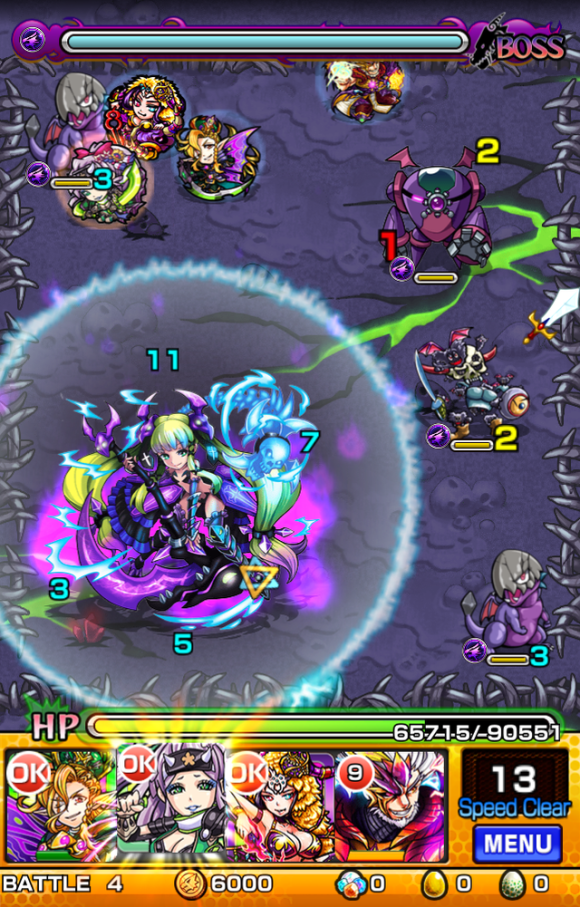
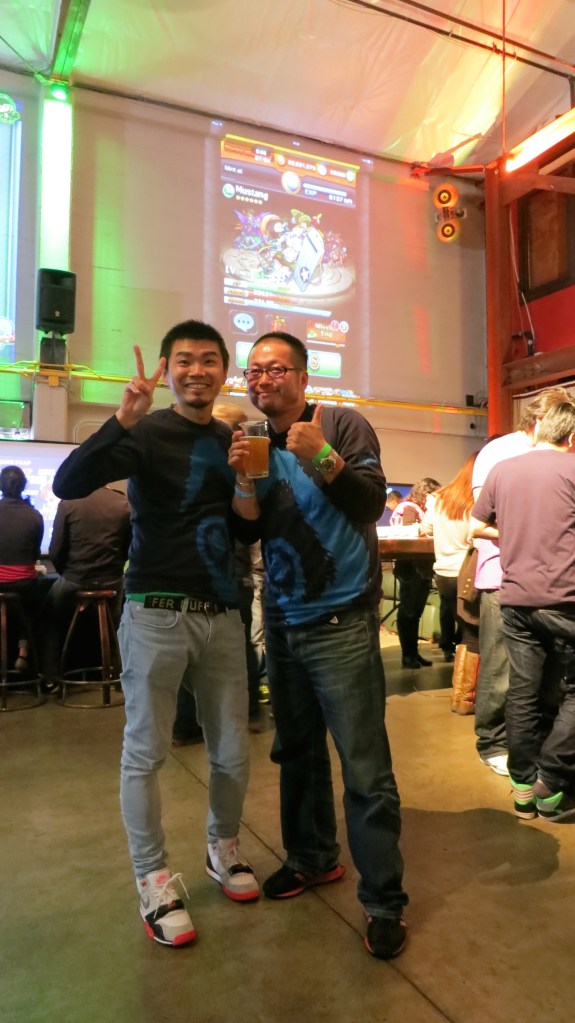
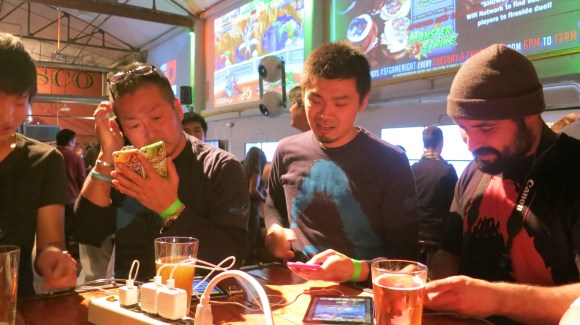
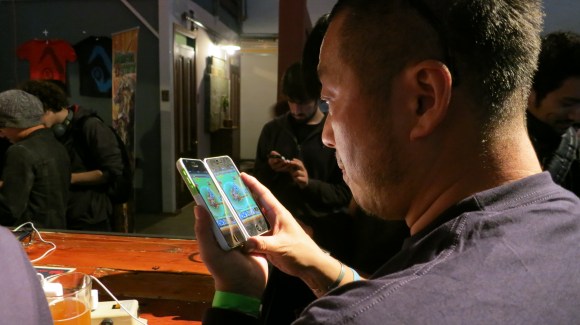
 Game dev berates gaming media on its “junior high school” analysis of PS4’s performance in Japan
Game dev berates gaming media on its “junior high school” analysis of PS4’s performance in Japan Tokyo University students rank the top 12 video games for cultivating smart kids
Tokyo University students rank the top 12 video games for cultivating smart kids Pokémon is getting another smartphone game this spring, and it’s “figure”-based 【Video】
Pokémon is getting another smartphone game this spring, and it’s “figure”-based 【Video】 Why do Japanese gamers spend so much more money on mobile games than anyone else?
Why do Japanese gamers spend so much more money on mobile games than anyone else? Master drummers are lurking in Japanese game centers
Master drummers are lurking in Japanese game centers Dark and edgy Jujustu Kaisen teams up with bright and cheery Sanrio for new merch line【Pics】
Dark and edgy Jujustu Kaisen teams up with bright and cheery Sanrio for new merch line【Pics】 Sip with Snorlax – Clever drinkware design creates Pokémon in your glass with every pour【Pics】
Sip with Snorlax – Clever drinkware design creates Pokémon in your glass with every pour【Pics】 Does Starbucks Japan’s new holiday Frappuccino really taste like a cup of fallen snow?
Does Starbucks Japan’s new holiday Frappuccino really taste like a cup of fallen snow? Starbucks Japan releases exclusive new holiday goods at Reserve Roastery Tokyo
Starbucks Japan releases exclusive new holiday goods at Reserve Roastery Tokyo What’s the most popular way to prepare Japan’s beloved breakfast dish, Tamago Kake Gohan?
What’s the most popular way to prepare Japan’s beloved breakfast dish, Tamago Kake Gohan? New heater-less pet kotatsu is a safe way to keep your furry friends warm this winter
New heater-less pet kotatsu is a safe way to keep your furry friends warm this winter Japanese job-hunters reportedly dismayed by requests for “photos showing who you are as a person”
Japanese job-hunters reportedly dismayed by requests for “photos showing who you are as a person” Visiting Evangelion’s Tokyo-3 anime locations in real-life Hakone【Photos】
Visiting Evangelion’s Tokyo-3 anime locations in real-life Hakone【Photos】 Pokémon doughnuts appear at Mister Donut, with Diglett as the star!
Pokémon doughnuts appear at Mister Donut, with Diglett as the star! Japanese whisky goes into these new sandwiches from Fuji Baking and Nagahama Distillery
Japanese whisky goes into these new sandwiches from Fuji Baking and Nagahama Distillery Nintendo’s controller capsule toys are so cool, even the machine you buy them from is awesome【Pics】
Nintendo’s controller capsule toys are so cool, even the machine you buy them from is awesome【Pics】 American gun owner opens our eyes to a different way of life in Tokyo
American gun owner opens our eyes to a different way of life in Tokyo Japanese communities giving their skylines a spring clean and saying goodbye to power lines
Japanese communities giving their skylines a spring clean and saying goodbye to power lines New Akita Inu and Hachiko marshmallows are the best and squishiest souvenirs from Japan
New Akita Inu and Hachiko marshmallows are the best and squishiest souvenirs from Japan Foreign man arrested for grabbing former AKB48 idol on Tokyo street, forcing her to ground
Foreign man arrested for grabbing former AKB48 idol on Tokyo street, forcing her to ground Burger King Japan creates Kyoto Whopper, its most Japanese burger ever, with Kyoto rice merchant
Burger King Japan creates Kyoto Whopper, its most Japanese burger ever, with Kyoto rice merchant Starbucks Japan unveils new Holiday goods for 2024
Starbucks Japan unveils new Holiday goods for 2024 Totoro stamp collection lets you add adorable Ghibli touches to cards and letters【Photos】
Totoro stamp collection lets you add adorable Ghibli touches to cards and letters【Photos】 Overwhelmed by modern social media? Japanese company is bringing back pagers with an emoji-twist
Overwhelmed by modern social media? Japanese company is bringing back pagers with an emoji-twist Tokyo Disneyland loses top-attendance crown for Japanese theme parks for second year in a row
Tokyo Disneyland loses top-attendance crown for Japanese theme parks for second year in a row Studio Ghibli releases new insect whistle necklace from Nausicaä of the Valley of the Wind
Studio Ghibli releases new insect whistle necklace from Nausicaä of the Valley of the Wind Totoro sequel anime Mei and the Baby Catbus will screen at Ghibli Park this winter
Totoro sequel anime Mei and the Baby Catbus will screen at Ghibli Park this winter Starbucks Japan unveils Halloween Frappuccino for 2024, and it’s like drinking a magic spell
Starbucks Japan unveils Halloween Frappuccino for 2024, and it’s like drinking a magic spell Evangelion creator Hideaki Anno returning to anime with new project for 50-year-old franchise
Evangelion creator Hideaki Anno returning to anime with new project for 50-year-old franchise Studio Ghibli releases new Howl’s Moving Castle goods that capture the magic from the anime movie
Studio Ghibli releases new Howl’s Moving Castle goods that capture the magic from the anime movie Adult Jam Bread causes a stir at store in Tokyo
Adult Jam Bread causes a stir at store in Tokyo Japanese convenience store Family Mart announces abolishment of eat-in spaces
Japanese convenience store Family Mart announces abolishment of eat-in spaces Kyoto becomes City of Yokai, with Night Parade of One Hundred Demons festival this autumn
Kyoto becomes City of Yokai, with Night Parade of One Hundred Demons festival this autumn McDonald’s new Happy Meals offer up cute and practical Sanrio lifestyle goods
McDonald’s new Happy Meals offer up cute and practical Sanrio lifestyle goods Foreign tourists on Shinkansen bullet train break suitcase etiquette, angering local passengers
Foreign tourists on Shinkansen bullet train break suitcase etiquette, angering local passengers [Deleted] Article written for April Fool’s Day 2018
[Deleted] Article written for April Fool’s Day 2018 Japanese government to make first change to romanization spelling rules since the 1950s
Japanese government to make first change to romanization spelling rules since the 1950s Foreigner’s request for help in Tokyo makes us sad for the state of society
Foreigner’s request for help in Tokyo makes us sad for the state of society Ghibli founders Toshio Suzuki and Hayao Miyazaki contribute to Japanese whisky Totoro label design
Ghibli founders Toshio Suzuki and Hayao Miyazaki contribute to Japanese whisky Totoro label design Princesses, fruits, and blacksmiths: Study reveals the 30 most unusual family names in Japan
Princesses, fruits, and blacksmiths: Study reveals the 30 most unusual family names in Japan Doraemon found buried at sea as scene from 1993 anime becomes real life【Photos】
Doraemon found buried at sea as scene from 1993 anime becomes real life【Photos】 Life-size vibrating Legend of Zelda Master Sword for sale from Nintendo【Photos】
Life-size vibrating Legend of Zelda Master Sword for sale from Nintendo【Photos】 Video shows that Street Fighter V’s story mode is so easy even a baby can beat it 【Video】
Video shows that Street Fighter V’s story mode is so easy even a baby can beat it 【Video】 New Pokémon mobile game, Pokéland, announced, immediately enters alpha testing with 134 species
New Pokémon mobile game, Pokéland, announced, immediately enters alpha testing with 134 species Sega of America taken to court in five million dollar lawsuit, accused of deceiving users
Sega of America taken to court in five million dollar lawsuit, accused of deceiving users Getting married? Love video games? Why not hold your wedding at this Tokyo video arcade!
Getting married? Love video games? Why not hold your wedding at this Tokyo video arcade! Nintendo answers questions on VR, 5G and staying behind the trends: “Our priority is entertainment”
Nintendo answers questions on VR, 5G and staying behind the trends: “Our priority is entertainment” Saitama senior arrested after calling telecom provider 24,000 times to complain
Saitama senior arrested after calling telecom provider 24,000 times to complain We played RESIDENT EVII, aka Bioha7ard, aka Resident Evil 7, at Tokyo Game Show
We played RESIDENT EVII, aka Bioha7ard, aka Resident Evil 7, at Tokyo Game Show Japanese condom maker pierces previous boundary with 0.01-millimeter wonder
Japanese condom maker pierces previous boundary with 0.01-millimeter wonder No console? No problem! Sony tests streaming video games direct to TV sets
No console? No problem! Sony tests streaming video games direct to TV sets “Coincidentally” named video game handhelds allow you to play 8, 16-bit Nintendo games on the go
“Coincidentally” named video game handhelds allow you to play 8, 16-bit Nintendo games on the go New Japanese video game lets you compete in an international toilet racing circuit
New Japanese video game lets you compete in an international toilet racing circuit Pokémon fans around the world distraught at the limited number of Pokémon in upcoming games
Pokémon fans around the world distraught at the limited number of Pokémon in upcoming games As mobile game Pokémon GO launches, players keep finding Magikarp in crazy locations 【Photos】
As mobile game Pokémon GO launches, players keep finding Magikarp in crazy locations 【Photos】 Yakiniku Simulator coming to Nintendo Switch and smartphones
Yakiniku Simulator coming to Nintendo Switch and smartphones Tokyo losing another iconic video game arcade as Ikebukuro landmark is closing for good
Tokyo losing another iconic video game arcade as Ikebukuro landmark is closing for good
Leave a Reply